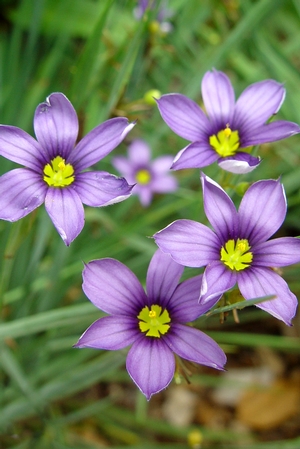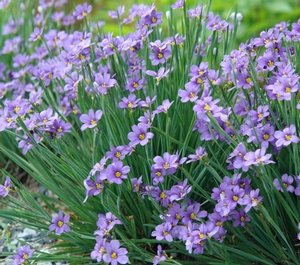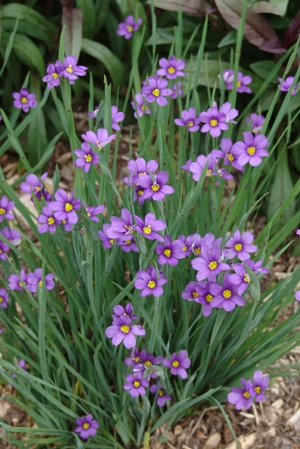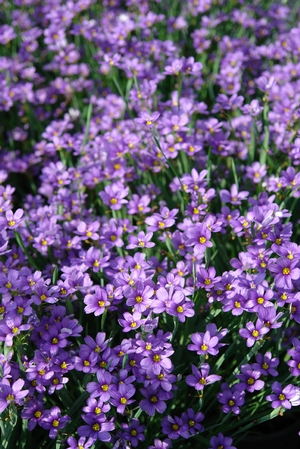Sisyrinchium angustifolium 'Lucerne'
Common: blue-eyed grassSisyrinchium angustifolium 'Lucerne' - 72 per flat
- Height: 8"-10"
- Spread: 12"
- Spacing: 12"
- Hardiness Zone(s): 5-9


Sisyrinchium angustifolium 'Lucerne' - 72 per flat



Bright blue star-shaped flowers with gold centers rise above fine, semi-evergreen, iris-like foliage from May to June. Excellent for edging, the 3/4" flowers are very good sized for the genus. We are very excited about this little gem. It will charm your customers for 8-10 weeks! Named by Robert Herman, who found it in Lucerne, Switzerland.
Prefers well-drained soils in full sun or part shade, and drought tolerant once established. Propagate by seed or division every 2-3 years. Divide every other year if plant begins to splay in fertile garden soil. Deadhead if reseeding is not desired. Best used as a border front, in rock gardens, to line pathways, or at the woodland's edge.
"I have always loved the little blue-eyed grasses, but I am baffled when I try to tell them apart. If you place a few side by side, sure there are differences, but you need a little hand lens to make accurate pronouncements, so really, who cares. There are at least one or two that grow in your own neck of the woods, prairie, or mountain, and they will not be embarrassed if we don't know their names. Sisyrinchiums are small relatives of iris and have similar, ribbonlike leaves in overlapping fans that grow by the dozen from a miniscule rhizome. The flowers worship the sun, remaining tightly closed until warmed by its rays, so you now have an excuse to call in sick on a glorious day ("I [cough cough] need to see the...Sisyrinchium...[sniffle]"-- your boss will be concerned and sympathetic, I'm sure). The little blue or purple flowers squeeze out of slits in the stem like Kangaroo babies with their heads out of the pouch. Typically, the sepals are wider than the petals, giving them a thin-fat, thin-fat appearance that is very distinctive. The color tends to pool and intensify in the throat, then change abruptly to orange or yellow deep inside. The flowers give way to large rounded pods that dangle ponderously from the slits on inadequate stems. If the plants did not set seed, they might bloom continuously. As it is, they enter a much-needed rest after the pods have ripened but often rebound and rebloom sporadically late in the summer if conditions are right. The thin, grassy foliage is nice in itself, and it will usually continue to grow and look good through summer and fall. Seedlings are common around the base of adults, so even though some are short-lived, they are self-perpetuating, and with time thick stands will develop."-William Cullina, The New England Wild Flower Society Guide to Growing and Propagating Wildflowers, p. 193-194